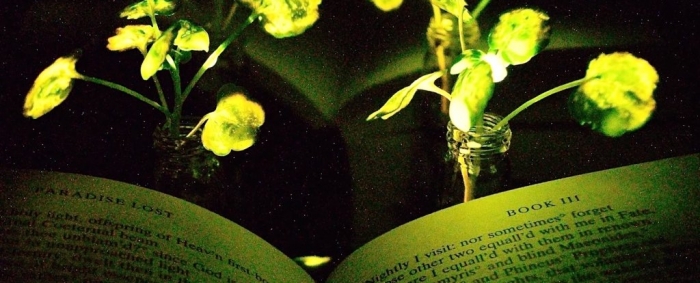"The vision is to make a plant that will function as a desk lamp - a lamp that you don't have to plug in. The light is ultimately powered by the energy metabolism of the plant itself," said senior author Michael Strano.
In 2013, a Kickstarter promising to produce a genetically engineered glowing plant went viral, earning US$484,013.
Now, that project is officially dead in the water - but it seems to have kicked something off. In 2014 researchers at a biotech company announced that they had produced a genetically engineered tobacco plant that produces a faint glow.
The MIT team took a different tack. For the last few years, Strano's lab has been working on a research area called plant nanobionics. This involves infusing the plant's cells with nanoparticles that can perform a particular task.
First, these particles are suspended in a liquid solution. Then the plant is immersed in the solution, and pressurised. This opens the stromata - tiny pores on the underside of the leaves - allowing the nanoparticles to enter.
Using this technique, the lab has previously produced plants that can detect explosives and plants that can monitor drought conditions.
For the glowing plants, the team loaded nanoparticles with the enzyme luciferase and molecule luciferin, chemicals that act together to produce bioluminiscence in fireflies and glowing marine animals such as copepods and jellyfish. Luciferase breaks down luciferin, and this creates the glow.
They also added a molecule called co-enzyme A, which removes a by-product of the reaction between luciferase and luciferin that can inhibit luciferase activity.
They introduced the nanoparticles into Nasturtium officinale, or watercress. The light produced is quite low - half as bright as a commercial 1-microwatt LED, and about a thousandth of the light needed to read by.
But still a vast improvement on the genetically modified tobacco plant, by a factor of about 100,000. The team also believes they can increase the level of light produced.
Initially, the plants glowed for about 45 minutes, but the team has since improved this to 3.5 hours.
"Our target is to perform one treatment when the plant is a seedling or a mature plant, and have it last for the lifetime of the plant," Strano said. "Our work very seriously opens up the doorway to streetlamps that are nothing but treated trees, and to indirect lighting around homes."
They also demonstrated that they can turn off the light by introducing a luciferase inhibitor. They hope they can develop a plant that can shut off its glow when, for example, it senses sunshine.
The research was funded by the US Department of Energy, and has been published in the journal Nano Letters.
More about: #Plants
















































